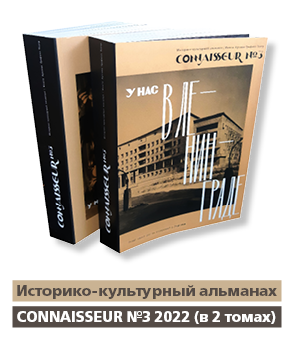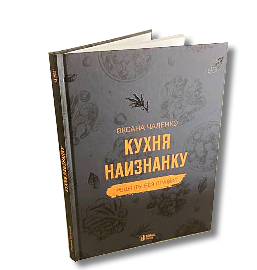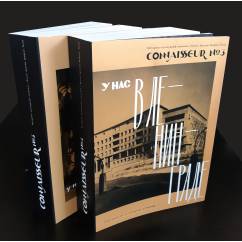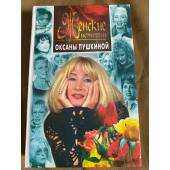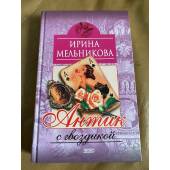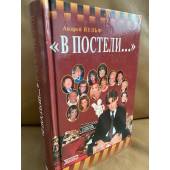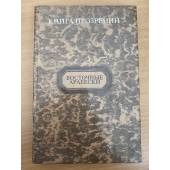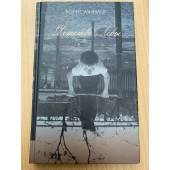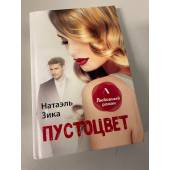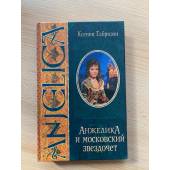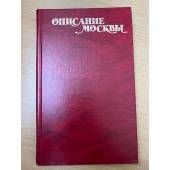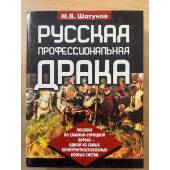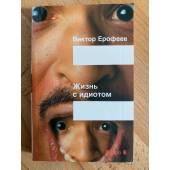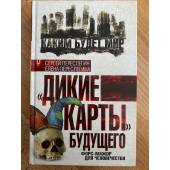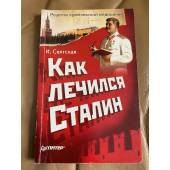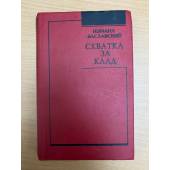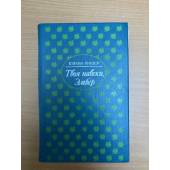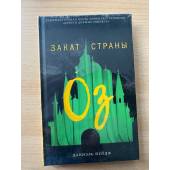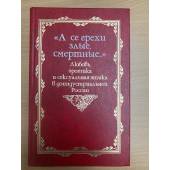
No products
Product successfully added to your shopping cart
There are %d items in your cart. There is 1 item in your cart.

Categories
- Albums (2086)
- Antique (before 1850) old books (before 1941) (592)
- Art and culture (5329)
- Audiobooks, compact discs (CD) (121)
- Autographed books (249)
- Board games (19)
- Books for school (4594)
-
Books in foreign languages
(8337)
- Books in Altai (4)
- Books in Azerbaijani (47)
- Books in Belarusian (46)
- Books in Bulgarian (2)
- Books in Dutch (2)
- Books in English (6501)
- Books in Estonian (10)
- Books in Finnish (7)
- Books in French (43)
- Books in Georgian (37)
- Books in Greek (2)
- Books in Hungarian (6)
- Books in Italian (12)
- Books in Japanese (7)
- Books in Karelian (3)
- Books in Kyrgyz language (6)
- Books in Latvian (46)
- Books in Lithuanian (8)
- Books in Norwegian (4)
- Books in Polish (14)
- Books in Portuguese (2)
- Books in Slovak (2)
- Books in Spanish (17)
- Books in Swedish (3)
- Books in Tajik (34)
- Books in the Adyghe language (3)
- Books in the Balkar language (8)
- Books in the Bashkir language (73)
- Books in the Buryat language (5)
- Books in the Kalmyk language (8)
- Books in the Karachai language (1)
- Books in the Komi language (5)
- Books in the languages of the peoples of the Caucasus (7)
- Books in the Mari language (17)
- Books in the Mokshan language (1)
- Books in the Mordovian language (3)
- Books in the Nogai language (1)
- Books in the Tatar language (101)
- Books in the Udmurt language (10)
- Books in the Yakut (Sakha) language (27)
- Books in the Yarzyan language (2)
- Books in Ukrainian (980)
- Books in Uzbek (9)
- Chuvash language books (29)
- Kazakh language books (8)
- Business. Economy (1613)
- Calendars (41)
-
Children's Literature
(10214)
- Books for parents (357)
-
Children's creativity and leisure
(906)
- Children's games. Experiments and experiments (16)
- Coloring pages (12)
- Crafts, cooking for children (6)
- Drawing for children (11)
- Make with your own hands (29)
- Modeling, application (7)
- Organization of children's parties (2)
- Origami, paper craft (5)
- Puzzles, crosswords for kids (8)
- Questionnaires, diaries, albums (1)
-
Educational and educational literature for children
(1676)
- Attention. Imagination. Memory (27)
- Basic security (4)
- Creative development (46)
- Foreign languages (102)
- General development. Manuals, reference books (81)
- General preparation for school (45)
- Introduction to the outside world (69)
- Logic. Thinking (32)
- Math and counting (42)
- Teaching reading and writing (91)
-
Educational literature for children
(769)
- Biographies for children (38)
- Books for boys (21)
- Books for girls (19)
- Culture, art, religion (48)
- Encyclopedias, reference books and other educational literature for children (182)
- History for children (86)
- Nature and the environment (242)
- Psychology. Etiquette (12)
- Science, technology, transport (54)
-
Fiction for children
(4272)
- Books for kids (113)
- Books on cartoons and films. Comics (88)
- Detectives and adventures for children (192)
- Foreign prose for children (314)
- Myths. Legends. Historical prose for children (74)
- Poetry for children (146)
- Russian prose for children (417)
- Science Fiction, Fantasy and Horror for Kids (121)
- Tales (506)
- Tales and stories about animals (144)
- Soviet children's books (907)
- Toy books (40)
- Collected works. Multivolume editions (3680)
- collection sets (54)
- Comics (53)
- Cookery (1331)
- Dictionaries. Phrasebooks (1327)
- Electronic books (10)
- Encyclopedia (1020)
- Engravings (7)
- Feng Shui (112)
- Fiction (84178)
- German and Germany (34733)
- gramophone records, vinyl (131)
- Guides (2023)
- Healthy lifestyle. Healthy eating. Fitness (1795)
- History (9739)
-
House. Life. Leisure.
(7626)
- Dom. Life (3142)
- Erotic books, books about sex, kamasutra (193)
- Hobby. Leisure (1660)
- Reference Literature (2150)
-
Sport
(940)
- Aerobics. Fitness. Yoga. Dancing (31)
- Board games (158)
- Combat and martial arts (82)
- Extreme sports (12)
- Gymnastics. Light and weightlifting (8)
- Olympic Games (13)
- Other sports (51)
- Physical culture and sport (73)
- Self-defense. Survival (20)
- Sport games (23)
- Tourism (85)
- Water sports (28)
- Winter sports (18)
- Kits (different books) (139)
- Kits (magazines) (60)
-
Magazines and newspapers
(2557)
- Architecture, interior (9)
- Astrology, esotericism (39)
- Bills (233)
- Calendars 2020 (1)
- Calendars 2021 (3)
- Cars, hunting, fishing (14)
- Celebrities, ZhZL (34)
- Children's magazines (12)
- Computer, technology (4)
- Cooking and Recipes (25)
- Crosswords, Scanwords (2)
- Editions with TV program (133)
- Entertainment magazines (7)
- Fashion, style, beauty (17)
- History (111)
- Hobbies, interests (104)
- Home, family, leisure (75)
- House, garden, vegetable garden (34)
- Literature, theatre, music (235)
- Magazines for men (212)
- Magazines for parents (2)
- Magazines for women (108)
- Medicine, health (153)
- Religion (10)
- Russian press abroad (480)
- Science, technology, fantasy (168)
- Sewing, knitting, needlework (8)
- Society, politics (638)
- Special Editions (57)
- Travel, countries (14)
- Maps, atlases (642)
- Military business. Weapons. Special services (3908)
- Miniature books (149)
- Music. Sheet music (1019)
- Postage stamps (92)
- Postcards (191)
- Posters (37)
-
Professional, educational literature
(24469)
-
Applied sciences. Technique
(2511)
- Agriculture. Veterinary medicine (41)
- Architecture (360)
- Chemical industry (104)
- Construction (445)
- Design (136)
- Energy (68)
- Engineering. Instrumentation (184)
- Food industry (19)
- Jewellery (23)
- Life safety (46)
- Light industry (39)
- Metallurgy (28)
- Mining (83)
- Nanotechnologies (5)
- Oil and gas industry (53)
- Other industries (101)
- Polygraphy (8)
- Radio engineering. Electronics. Communication (263)
- Technical Sciences (330)
- Technology of production (100)
- Timber and wood chemical industry (13)
- Transport (183)
-
Computer Literature
(471)
- Administration. Information security (5)
- Computer for … (16)
- Computer networks. Internet (23)
- Databases (8)
- Design systems (CAD/CAM) (1)
- General questions (41)
- Graphics, design, multimedia, games (27)
- Hardware (4)
- Informatics (27)
- MS Office. Microsoft office programs (11)
- Operating systems (12)
- PC work for beginners (18)
- Programming languages and environments (37)
- Humanities (8795)
-
Legal Literature
(973)
- Civil law (54)
- Civil procedural law. Judiciary (8)
- Comments (12)
- Constitutional law. Administrative law (30)
- Criminal law (40)
- Criminology. Criminalistics (37)
- Customs law (8)
- Financial law (11)
- International law (34)
- Labor law. Social security law (9)
- Land law. Environmental law (3)
- Law enforcement agencies (23)
- Law in general. History and theory of state and law (29)
- Other branches of law (23)
- Regulatory acts. Reference literature (19)
- Right in everyday life (17)
- Textbooks and teaching aids (43)
- Workshops and practical aids (6)
-
Medicine and Health
(2413)
- Applied Medicine (44)
- Clinical Medicine. Internal Medicine (22)
- Cosmetology (22)
- Fundamentals of Medicine. Healthcare System (27)
- General pathology. General therapy (25)
- Narcology (12)
- Nervous system (29)
- Other branches of medicine (90)
- Pediatrics (51)
- Pharmacology. Toxicology (21)
- Popular and alternative medicine (1133)
- Psychiatry. Neuropathology. Sexopathology (71)
- Surgery (18)
- Monographs (1110)
- Natural sciences. Mathematics (2215)
- Social Sciences (5519)
-
Applied sciences. Technique
(2511)
- Religion. Esotericism (6349)
- Russian Abroad (books published abroad) (2597)
- Russian language (774)
- Russian language for children (Textbooks) (155)
- Soviet books until 1992 (12977)
- Yoga Books (161)
- Show All
Историко-культурный альманах CONNAISSEUR №3 2022 (в 2 томах)
174170
New
Items 3
4,5 kg
Sale the same product...More info
The new issue of the historical and cultural almanac Connaisseur is dedicated to the Leningrad years of St. Petersburg culture, 1924-1991.
Unknown pages of the past, dramatic destinies, family stories.
This is not official life, not the history of institutions, these are stories about human independence in spite of everything in the unbearable conditions of the twentieth century, portraits of people of culture and science who preserved their work and their gifts.
In the room:
• Ambush in Gumilev's room
• Jokes of Russian orientalists
• N. Lapshin’s drawings for “The Book of Marco Polo” win in New York
• How pre-war bibliophiles were crushed
• The Golden Age of Leningrad book covers
• Unknown letters and graphics by V. Konashevich
• Leningrad tram: creativity of the besieged city
• Jazz as freedom: Gennady Golshtein and Seva Novgorodtsev tell.
Among the authors of the issue are archivists, art historians, historians, writers, collectors from St. Petersburg, Moscow, Berlin, Boston, Vyborg, Jerusalem, London, Munich, New York, Paris, Prague, San Francisco, Toronto.
The first half volume covers two pre-war decades.
The second half covers the siege and the post-war decades.
Compiled and editor: Ivan Tolstoy
2 volumes
1376 pages in landscape format,
2000 drawings and photographs,
weight – 4.5 kg
Most of the photographs and illustrations are published for the first time.
SUMMARY
The third issue of the historical and cultural almanac Connaisseur is dedicated to the period of St. Petersburg’s history when it was known as Leningrad. One of the paradoxes of this era is that despite the political upheavals, its now-Soviet citizens continued to live within the mise-en-scène of days gone by. The historic city stood before their eyes as if nothing had happened – defeated in rhetoric, yet still real and irreplaceable – and they walked around it carrying pain and memories. With ever-growing viciousness, the new authorities tried to cover up the past and cut it off from its inhabitants. The power of memory was therefore necessary to keep Petersburg alive in the middle of Leningrad. These efforts would probably have failed, were it not for the great city itself, which preserved its countenance in almost every way, silently helping those who remained loyal to it.
This spirit of fortitude and professionalism is what Here in Leningrad is about - how, in spite of everything, writers, artists, musicians, scientists, and intellectuals of all ages and walks of life remained faithful to them ideals and principles, to their teachers and students, to their work and their gifts.
Essays by Alexander Goryanin, Natalia Masolikova, Marina Sorokina, and Andrei Ustinov focus on the 1920s, when the city was beginning to get used to its new names and ways of living. Although by this time the Silver Age finally gave way to a new ideology and a new reality, it did not lose its aesthetic charge. Testament to this was the flowering of several creative fields: the Leningrad theater scene (“But This Is a Play!”), book illustration and graphic design (Lyubov Rozhdestvenskaya on the publishing house Academia; an essay by Erich Hollerbach), the emergence of the Leningrad School of art (a conversation with Erast Kuznetsov), outstanding achievements in oriental studies ("In the Land of the Good King Buk") and Pushkin studies (letters by Lev Modzalevsky), as well as chess art ("Radlov's Chess Gallery ").
Many members of the World of Art (Mir Iskusstva) movement also continued to connect their fate with post-revolutionary Petrograd/Leningrad (survey by Pavel Pavlinov).
The 1930s had a chilling effect not only on public and political life, but also on the peaceful occupations of Leningrad's inhabitants: bibliophiles (“My Odd Fellows”), artists (“How We All Perished”) , and translators (“Inside a Divided Family”). And, as it goes with revolutions, the chill eventually reached the builders themselves of “heaven on earth” as devoted Bolsheviks became the next victims of political repression (“Our Cover: a History of the House on Karpovka”).
A huge part of the city's memory-space is occupied by the siege of Leningrad during the Second World War ("Letters of Vladimir Lublinsky", "Konashevich's Apartment Question", "The Acme of the Siege" ).
Leningrad is unimaginable without the family archives that were preserved through years of the most brutal persecution ("The Mexican Soap Opera" recounts the story of the Gukovskys and Dolinins; "My Father is a Pushkinist" is a sketch about Arkady Gordin; "Janissaries All Around" presents fragments from Olga Freidenberg's diary; "In Terekty I Renounced the World" pays homage to Andrey Egunov).
New dramas and new disappointments filled the years of the thaw ("My University" by Lyudmila Ageyeva; "The Candle Burned" by Andrei Aryev; "The Hidden Mikhail Taranov" by Evgeny Taranov).
The 1970s are thought of as a time of hopelessness and the beginning of stagnation (“In the Leningrad Circle” by Marina Efimova; “The Last Oberiut” by Sergey Chubrayev; “Creating the Blok Museum” by Natalia Tsendrovskaya; “St. Leningrad” by Viktor Kagan).
The protagonists of this issue include artists (Mstislav Dobuzhinsky, Vladimir Konashevich, Viktor Zamirailo, Nikolai Radlov, Vladimir Shchuko, Olga Hildebrandt-Arbenina, Vera Matyukh, Anatoly Korolev), musicians (Gennady Golshtein, Seva Novgorodtsev , Vitaly Yefimov), photographers (Nina Alovert, Mark Serman, Lev Sherstennikov, Alexander Petrosyan), and collectors (Mark Rats, Andrey Vasiliev, Nikolai Kononikhin).
There is also a recurring character - Nikolai Akimov, theater director, artist, essayist, and one of the wittiest people in town. Connaisseur introduces readers to his portraits, photographs, book designs, sketches of theater costumes, directorial and pedagogical work (essays by Marina Zabolotnya, conversations with Nina Alovert, Natalia Izbinskaya, and Natalia Kochergina) and loyalty in friendship ("Our Cover").
1376 pages including approximately 2000 photos and illustrations.
Data sheet
| ISBN | 9788090677982-9788090677999 |
| Publisher | Praha, Human Rights Publishers s.r.o. |
| Publication date | 2022 |
| Number of Pages | 1376 страниц альбомного формата 2000 рисунков и фотографий |
| Bookbinding | Полужесткий переплет |
All author\'s books:
Seller Info/Map |
Seller type: Company (business)
Подробнее
Volbedingstr. 2 A2-03
Leipzig, 04357
Germany
03416870612




